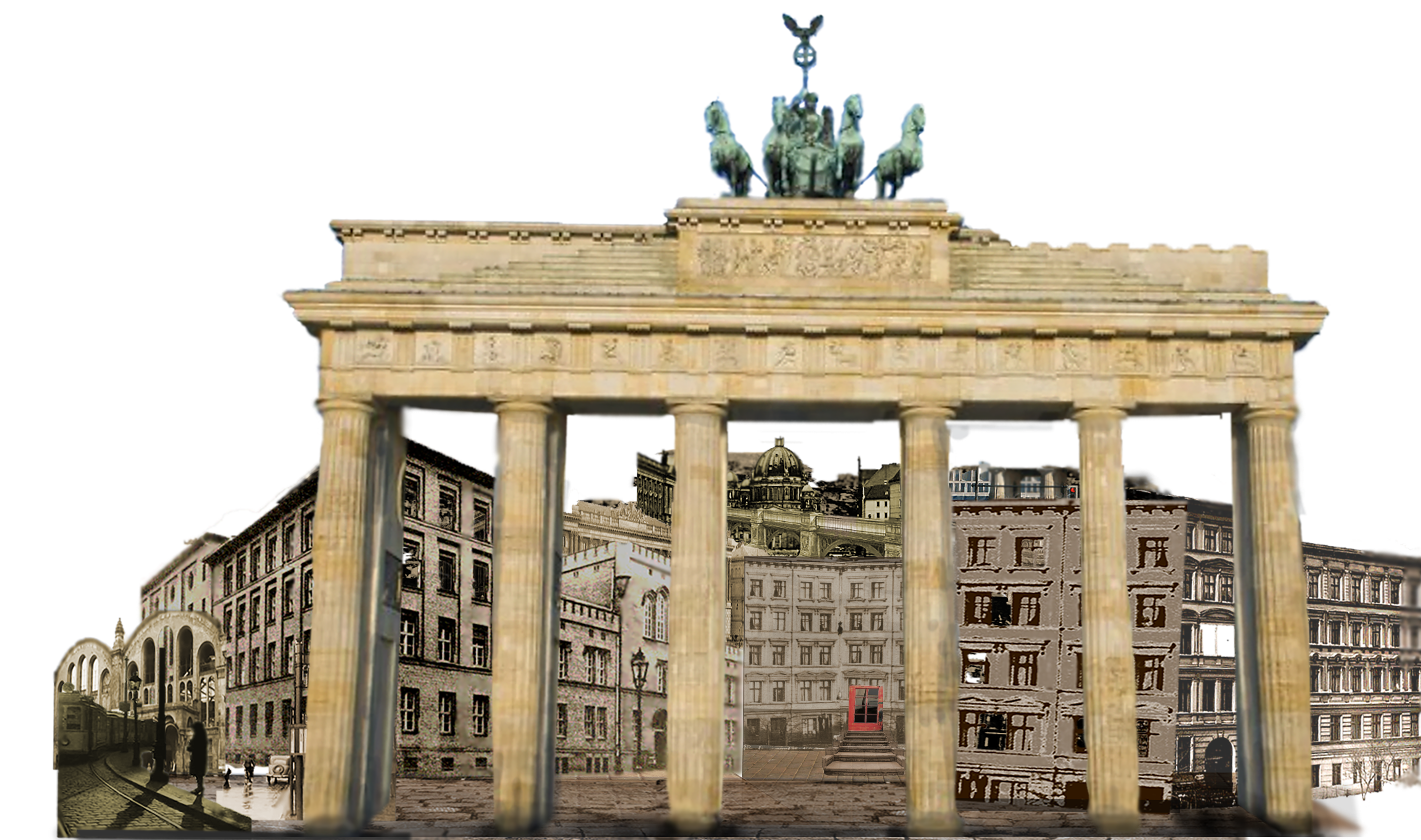An interactive digital journal following the progress of designing and building an official website for an independent feature film, as it moves from abstract concept toward reality.
Created with InDesign’s Digital and Online Publishing software. Includes written content, illustrations, interactive elements and animations. The journal is a dynamic way to record the process as it happens. Essentially it’s a journey that begins with the first conversations with the filmmaker. From there, stops along the way include:

The City Illustration
An odyssey spanning three generations and continents. Against the backdrop of monumental historic events the film weaves the strands of a family torn apart, whose bonds rise above their loss and endure despite time, distance and memory.It takes place in Berlin during the 1930’s Weimar era, Germany during World War II, post World War II in countries beyond Germany and in Contemporary America.
Embodies the style of the film and reflects its heart and passion.
Responsive, mobile ready, custom themed WordPress site that showcases the film with trailer, promotional elements and in-depth information. Integrates the story, characters, historical events and film production.
Media includes trailers, illustrations, animations, and client provided vintage assets.
The software has extensive components for creating interactive documents, digital and online publishing, magazines, brochures, eBooks, and InDesign's ePUB format.
Possibilities include: hyperlinks, buttons, multi-state objects, page transitions, animated elements, dynamic interactive documents, video and audio, 360 Viewer, panoramas, ZoomSlideshows, adding your own script, CSS or HTML, as well as the ability to publish books online.
The process of building a document in InDesign requires:
Film-related information about the film’s production, director, cast and crew, reviews and awards, story and characters. This includes: behind the scenes, galleries, posters and trailers as well as extras such as additional and/or extended trailers, interviews, music, videos, games and downloadables.
The site must be able to accommodate a large amount of media, including multiple trailers both short and long, HD video, large image files, galleries, supplemental videos, audio files, music, games and downloadable items.
Many film sites incorporate animated elements like character illustrations, titles, navigation, iconic objects, symbols, and page transitions.
Film websites present unique challenges for mobile devices and accessibility.
Access to video content, high resolution images and animated elements that require Flash, as well as mobile’s portrait orientation and an aspect ratio that doesn’t match film’s.
Clear, detailed image captions, descriptions of images and other media, closed captioning, and being prepared for translation into many languages.
Failing to accomodate these needs will limit the richness of the experience for mobile users, those needing accessible accommodations, and non-English speakers, leaving potential visitors in the dark.